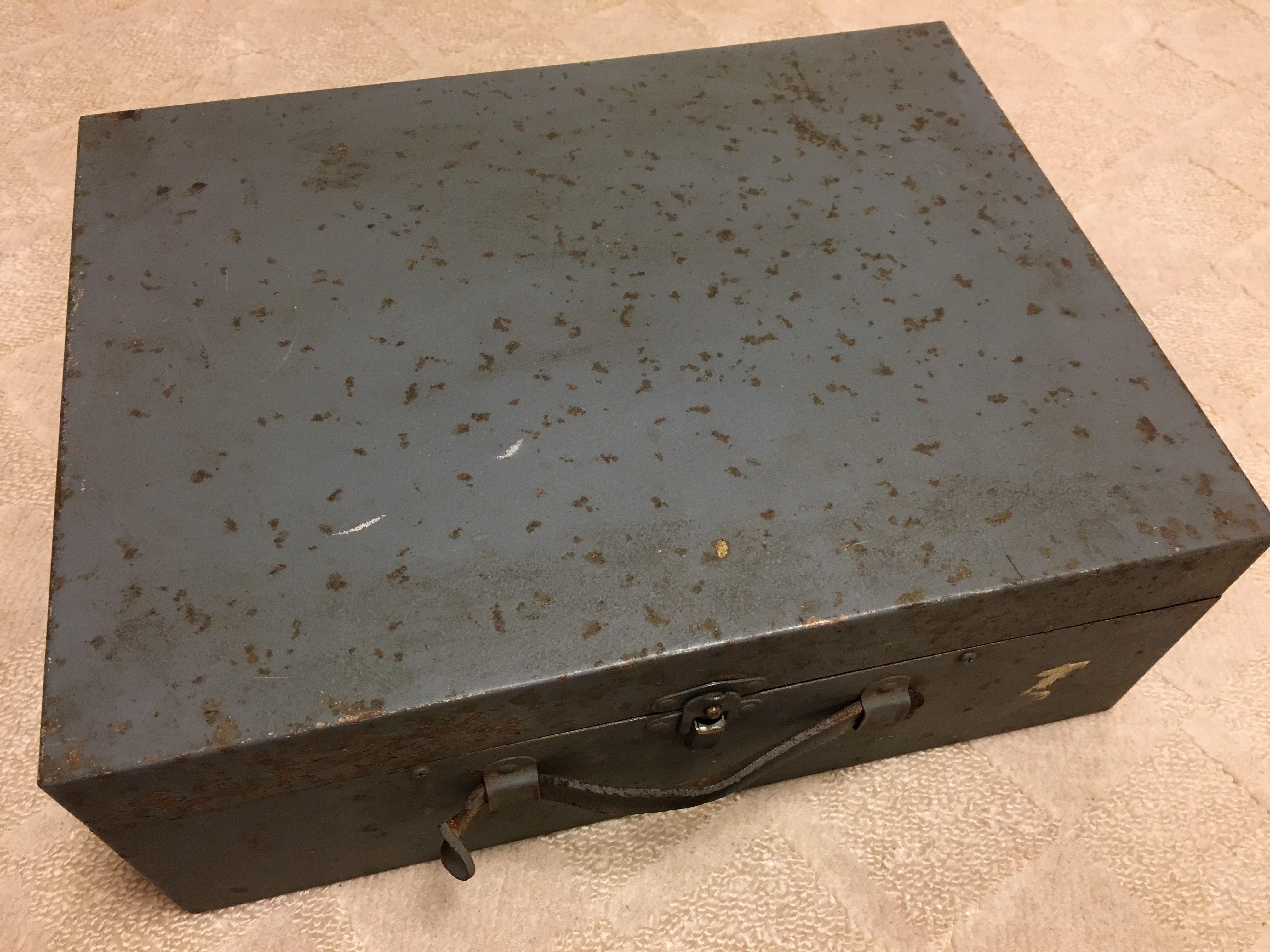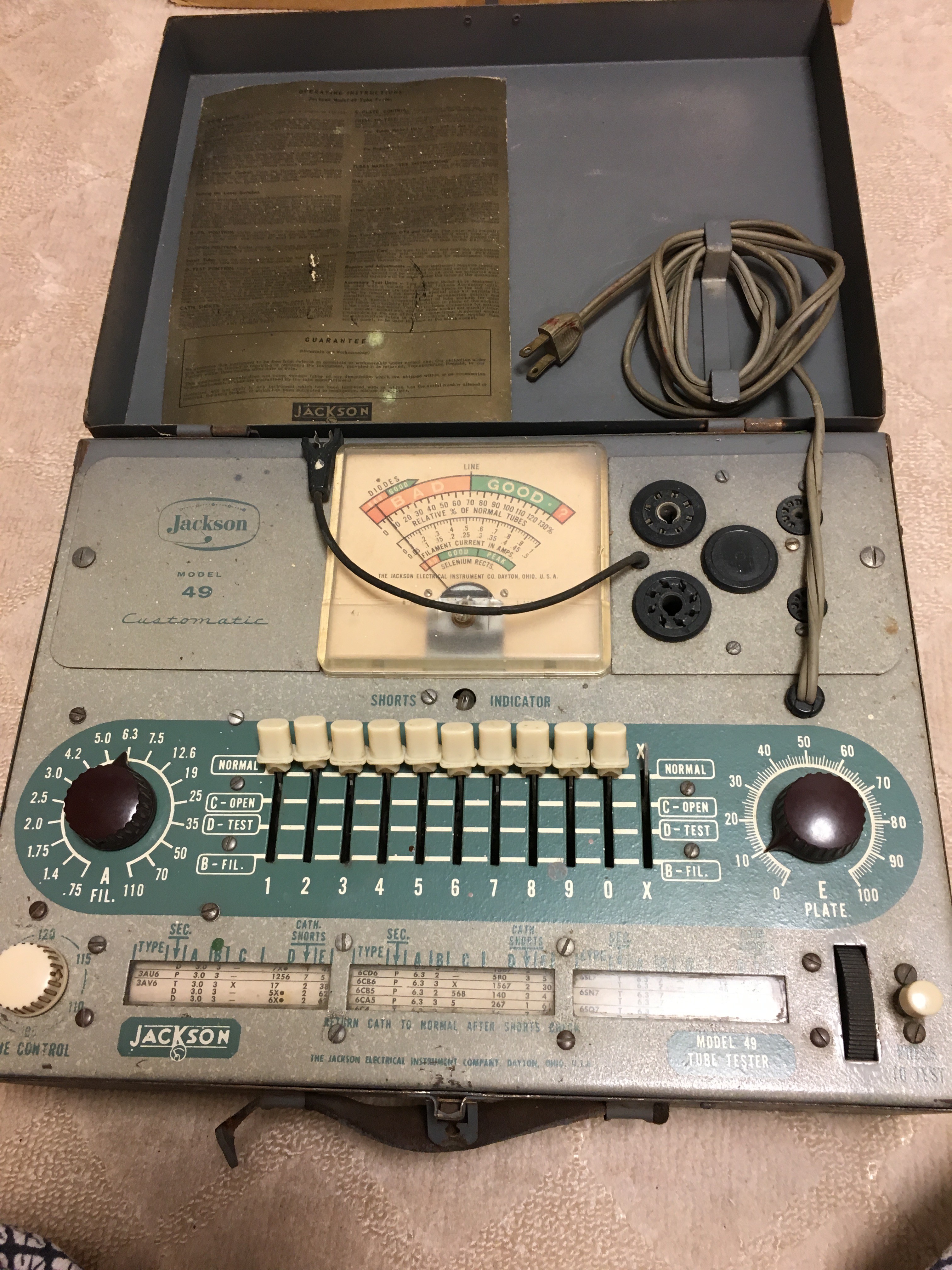I got one instrument in old metal box...

It is made in 1950. It is not so heavy and inside it....

It's vacuum tube tester made by Jackson. I know more expensive one can measure gm in addition to emission, but they are very expensive. This time I got this one just by 10000JPY. Actual operation example is introduced in the following movie. So now I can check if the tube is dead or live!
 kodera2t
kodera2t
Discussions
Become a Hackaday.io Member
Create an account to leave a comment. Already have an account? Log In.
Thank you comment and let me know details! Yeah,,, someday I will try Nuvistor check by this box!? But do you know the detail about "X-ray radiation from diode tube"??
Are you sure? yes | no
It seems you have to use a very high voltage, tens of kV, to get sufficient strength X-rays that can penetrate the glass. I searched for that phrase and found a page by a Czech fellow who used a DY87 tube. You probably saw that page also.
Are you sure? yes | no
Oh... ok. Thank you for the information. Also it is relief because I will not use (and cannot produce) more than 1kV rectifying operation. Thank you!
Are you sure? yes | no
Hahaha, wow cool equipment. I even recognise some of the tube numbers in the lookup table but don't ask me to remember what their functions are. I remember the US scheme is: first number is the heater voltage, the letters are different for each type, and the last number the count of electrodes, heater counting as 1. European tubes had another scheme: first letter is heater voltage or current, then letter(s) for each component, e.g. ECC83 is 6.3V heater, twin triode, then distinct number 83. Actually the first digit indicates the base type IIRC.
Will you be making an adapter for testing the small tubes that don't fit into the sockets?
Thanks for the adventure.
Are you sure? yes | no